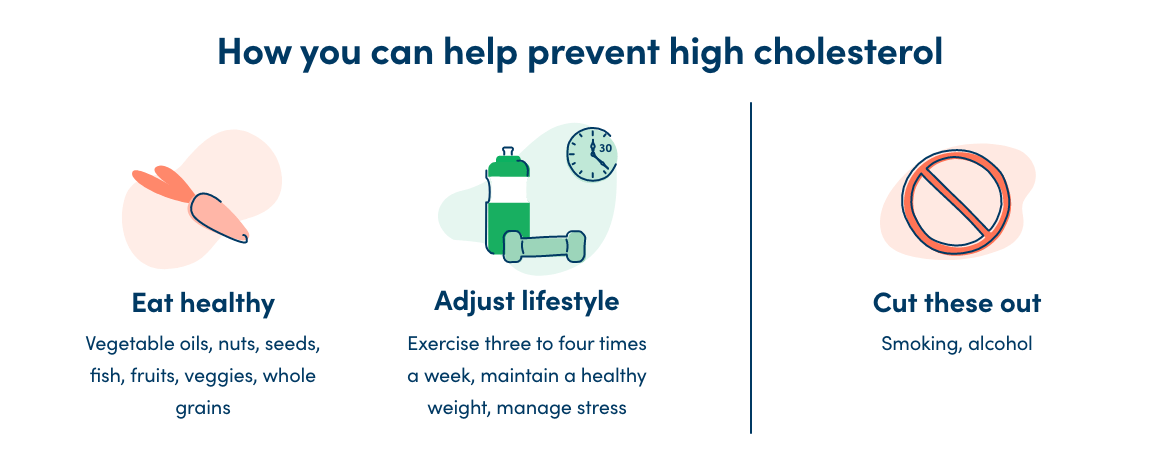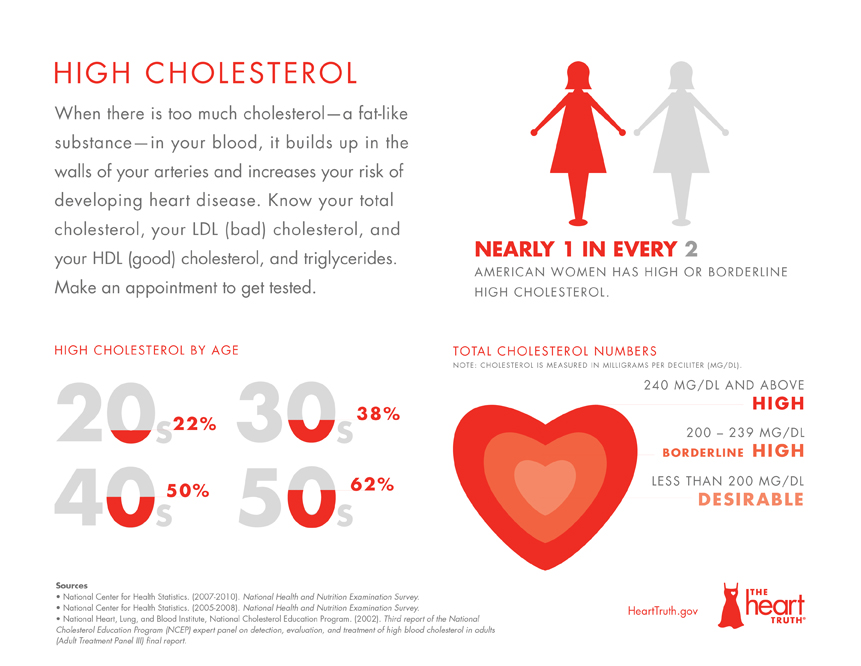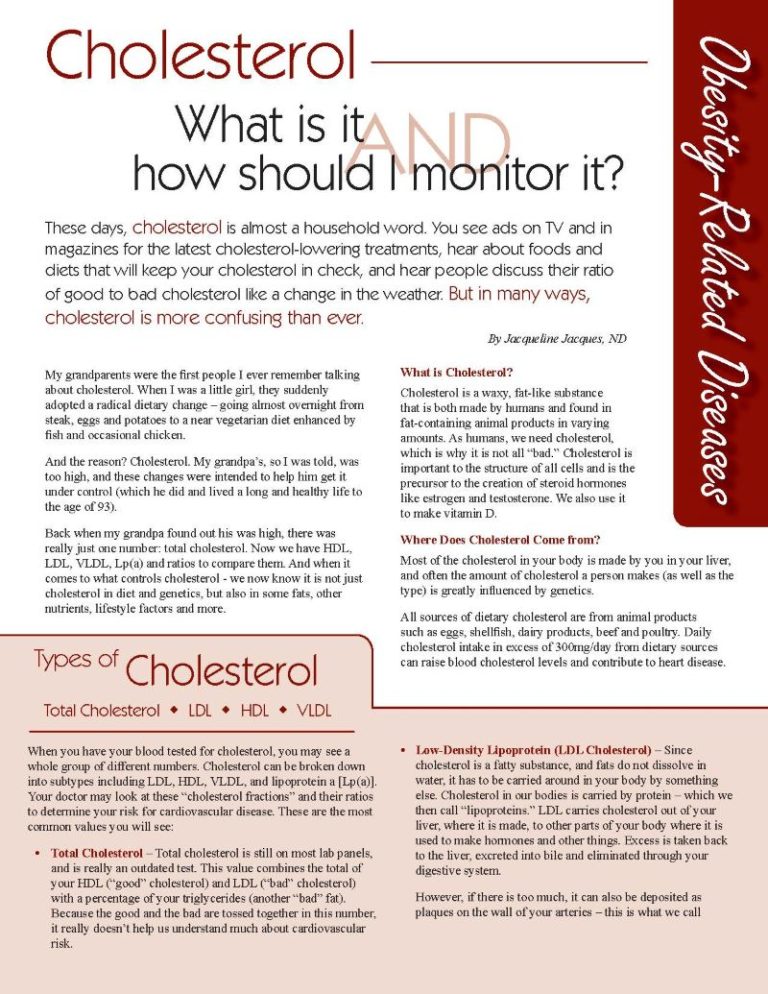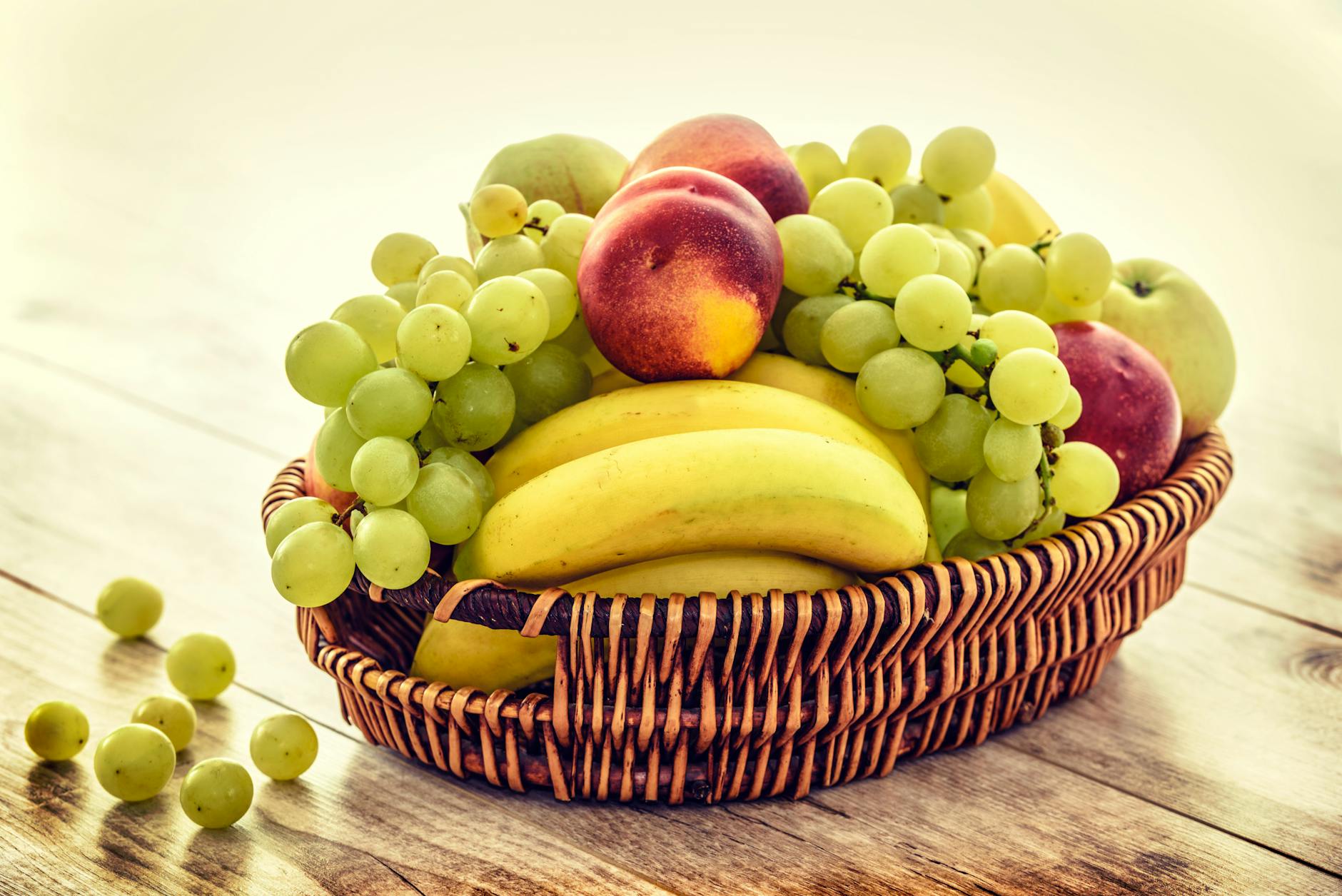Discover the secret to lowering cholesterol levels naturally with these top diet tips for a healthier heart and body.
Table of Contents
- Introduction: What is Cholesterol?
- Understanding High Cholesterol
- Top Diet Tips to Beat High Cholesterol
- The Power of Fruits and Vegetables
- Why Trans Fats Are a No-No
- Stay Active: Exercise and Cholesterol
- Reading Food Labels
- Cooking at Home
- Smart Snacking
- Busting Myths About Cholesterol
- Conclusion: Recap of Diet Tips to Beat High Cholesterol
- FAQs About Cholesterol and Healthy Eating
Introduction: What is Cholesterol?
Cholesterol is a waxy, fat-like substance that is found in every cell of our bodies. It’s kind of like the building blocks that help your body work properly. However, too much cholesterol, especially the bad kind called LDL cholesterol, can be harmful to your health. That’s why it’s important to keep your cholesterol levels in check.
Having high cholesterol means that there is too much LDL cholesterol in your blood. This can lead to problems with your heart and even your liver. We need to make sure we eat the right foods to keep our cholesterol levels in a healthy range.
Understanding High Cholesterol
Cholesterol is a waxy, fat-like substance that is found in the cells of your body. It is important for making hormones, digesting food, and insulating nerve cells. However, having too much cholesterol, especially low-density lipoprotein (LDL) cholesterol, also known as “bad” cholesterol, can be harmful to your health.
Good vs. Bad Cholesterol
There are two main types of cholesterol in your body: high-density lipoprotein (HDL) and low-density lipoprotein (LDL). HDL is known as “good” cholesterol because it helps remove LDL, the “bad” cholesterol, from your bloodstream. On the other hand, LDL can build up on the walls of your arteries, leading to blockages that can raise the risk of heart disease and stroke.
How High Cholesterol Affects Our Bodies
Having high levels of LDL cholesterol can also affect organs like your liver. When you consume too many foods high in saturated and trans fats, it can lead to the accumulation of fat in your liver, causing a condition known as fatty liver disease. This can interfere with your liver’s ability to function properly and increase the risk of other serious health issues.
Top Diet Tips to Beat High Cholesterol
When we talk about high cholesterol, we are referring to having too much of the bad kind of cholesterol in our bodies. This can be harmful to our health, especially our heart and liver. But don’t worry, there are simple diet tips that can help you keep your cholesterol levels in check.

Image courtesy of blog.csiro.au via Google Images
Eating Foods Rich in Dietary Fiber
Dietary fiber is like a superhero when it comes to fighting high cholesterol. It helps remove excess cholesterol from our bodies, keeping our levels balanced. So, make sure to include plenty of fruits, vegetables, whole grains, and legumes in your meals.
Including Omega 3 in Your Diet
Omega 3 is a special type of healthy fat that can help lower cholesterol levels. You can find omega 3 in foods like fatty fish (salmon, mackerel, and sardines), flaxseeds, and walnuts. Including these in your diet can be delicious and beneficial for your cholesterol.
Choosing Cholesterol-Lowering Foods
There are plenty of tasty options out there that can help lower your cholesterol. Foods like oats, beans, nuts, olive oil, and avocados are not only delicious but also great for keeping your cholesterol in check. So, next time you’re at the market, make sure to add these to your shopping list!
The Power of Fruits and Vegetables
Have you ever wondered why your parents always tell you to eat your fruits and vegetables? Well, it turns out that these colorful foods are like superheroes when it comes to keeping your cholesterol levels in check. Let’s dive into why these foods are so important for your health.
Eating Foods Rich in Dietary Fiber
Do you know what makes fruits and vegetables so special? It’s their high dietary fiber content! Fiber is like a broom that sweeps away the bad cholesterol in your body, helping to keep your levels in a healthy range. So, next time you see a juicy apple or some crunchy carrots, remember that they’re doing wonders for your body.
Choosing Cholesterol-Lowering Foods
Not only are fruits and veggies packed with fiber, but they also contain other nutrients that can lower cholesterol levels. Foods like berries, oranges, spinach, and broccoli are rich in vitamins and antioxidants that help fight off the bad cholesterol and keep your heart healthy. So, make sure to include a variety of colors on your plate to get all the benefits these foods offer.
Why Trans Fats Are a No-No
Have you ever heard of trans fats? Well, if you want to keep your cholesterol levels in check, it’s important to know why trans fats are a big no-no for your body. Let’s dive into what trans fats are and why you should avoid them.

Image courtesy of www.ahn.org via Google Images
What Are Trans Fats?
Trans fats are a type of unhealthy fat that is created through a process called hydrogenation, where hydrogen is added to liquid vegetable oils to make them more solid. This process can extend the shelf life of foods but at a cost to our health.
Why Are Trans Fats Bad for You?
Trans fats raise your LDL cholesterol levels, which is the bad type of cholesterol that can clog your arteries and increase your risk of heart disease. These fats can also lower your HDL cholesterol, which is the good kind that helps protect your heart.
How Do Trans Fats Affect Your Body?
When you eat foods high in trans fats, like fried foods, baked goods, and processed snacks, these fats can build up in your body over time. This can lead to inflammation, damage to your blood vessels, and increase your chances of developing heart problems.
So, to keep your cholesterol levels in check and your heart healthy, it’s best to steer clear of foods that contain trans fats. Opt for healthier options like fruits, vegetables, whole grains, and lean proteins to help maintain a balanced cholesterol profile.
Stay Active: Exercise and Cholesterol
Exercise is a fantastic way to keep your body healthy and strong. It’s not just about running around and playing; it’s also about keeping your insides in good shape. Let’s talk about how being active can help manage high cholesterol.
Why Exercise Matters
When you exercise, your heart gets a workout too. It becomes stronger and more efficient at pumping blood and oxygen around your body. This helps reduce the bad cholesterol, also known as LDL cholesterol, in your blood. That’s a good thing because high levels of LDL cholesterol can clog up your arteries and cause heart problems.
How Exercise Helps
Did you know that being active can also increase the good type of cholesterol in your body? HDL cholesterol helps clear away the bad stuff from your arteries. So, by exercising regularly, you not only lower your bad cholesterol, but you also boost the good kind!
Whether it’s playing your favorite sport, going for a bike ride, or just dancing around, find a way to move your body every day. It doesn’t have to be anything too intense; even a brisk walk can work wonders for your cholesterol levels.
Reading Food Labels
When it comes to keeping our cholesterol levels in check, knowing how to read food labels is a crucial skill. By understanding the information on food packaging, you can make smarter choices for a healthier diet.

Image courtesy of www.mylifeinred.net via Google Images
Key Details to Look For
One important thing to pay attention to on food labels is the amount of LDL cholesterol in the product. LDL cholesterol is the “bad” kind that we want to keep low to protect our hearts and overall health.
Look for foods that are low in saturated fats and trans fats, as these can raise your LDL cholesterol levels. Instead, aim for foods that are high in healthy fats, like monounsaturated and polyunsaturated fats, which can actually help lower your LDL cholesterol.
Understanding Serving Sizes
Another vital piece of information on food labels is the serving size. This tells you how much of the food is considered one serving and how many servings are in the entire package. Keep in mind that if you eat more than one serving, you need to adjust the nutrient values accordingly.
Be mindful of portion sizes and try to stick to the recommended servings to avoid consuming too much of certain nutrients, like fats and sugars, that can negatively impact your cholesterol levels.
Checking for Fiber Content
Fiber is a superhero when it comes to managing cholesterol levels. Look for foods that are high in dietary fiber, as fiber helps to lower LDL cholesterol and improve overall heart health.
| Diet Tips for Beating High Cholesterol |
|---|
| Eat more fruits and vegetables |
| Choose whole grains over refined grains |
| Limit saturated fats and trans fats |
| Incorporate more plant-based proteins |
| Include sources of Omega-3 fatty acids |
| Reduce sugar and processed foods intake |
| Opt for lean proteins like fish and poultry |
| Use healthier cooking oils like olive oil |
Pay attention to the fiber content listed on the food label and aim to include plenty of fiber-rich foods in your diet, such as fruits, vegetables, whole grains, and legumes.
By becoming skilled at reading food labels and making informed choices, you can take control of your cholesterol levels and support your overall well-being.
Cooking at Home
One of the best ways to manage your cholesterol levels is by cooking at home. When you cook your own meals, you have control over the ingredients you use and can make healthier choices.
Finding Cholesterol-Lowering Foods
When you cook at home, you can pick out ingredients that are known to lower cholesterol levels. Foods like beans, oats, and fatty fish like salmon are great options to include in your recipes.
Cooking with Dietary Fiber
Another important factor in managing cholesterol is eating foods high in dietary fiber. You can easily incorporate fiber-rich ingredients like whole grains, fruits, and vegetables into your homemade meals.
Trying Family-Friendly Recipes
Get the whole family involved in cooking delicious and healthy meals together. Try making dishes like whole wheat pasta with vegetables, grilled chicken with a side of quinoa, or vegetable stir-fry.
Cooking at home not only helps you control your cholesterol levels but also allows you to bond with your family over delicious, heart-healthy meals.
Smart Snacking
When it comes to managing high cholesterol, it’s not just about the meals you eat but also the snacks you choose. Smart snacking can help keep your cholesterol levels in check and your body healthy. Let’s explore some delicious and nutritious snack options that can fight high cholesterol.

Image courtesy of www.obesityaction.org via Google Images
Eating Fruits and Vegetables
Fruits and vegetables are packed with essential nutrients, including dietary fiber, which can help lower cholesterol levels. Try snacking on berries, apples, carrots, and bell peppers to get that extra fiber boost that your body needs. These colorful and crunchy snacks are not only tasty but also great for your heart.
Adding Nuts and Seeds to Your Snack Time
Nuts and seeds like almonds, walnuts, chia seeds, and flaxseeds are rich in omega-3 fatty acids, which are known for their heart-healthy benefits. These nutrient-packed snacks can help reduce bad cholesterol levels and boost good cholesterol in your body. Just remember to enjoy them in moderation, as they are calorie-dense.
Dipping into Greek Yogurt
Greek yogurt is a creamy and satisfying snack that can contribute to lowering cholesterol levels. It is a good source of protein and probiotics, which can support gut health and overall well-being. Consider adding some fresh fruits or a drizzle of honey to your Greek yogurt for a tasty and wholesome snack.
By choosing smart snacks like fruits, vegetables, nuts, seeds, and Greek yogurt, you can fuel your body with the nutrients it needs to combat high cholesterol. Remember, making healthy snack choices is just as important as selecting nutritious meals for a balanced diet. Keep your cholesterol in check and your taste buds happy with these cholesterol-fighting snack ideas!
Busting Myths About Cholesterol
There are several myths surrounding cholesterol that can be confusing. Let’s clear up some common misunderstandings about cholesterol.
Myth: All Cholesterol is Bad
Actually, that’s not true! Cholesterol is essential for our bodies to function properly. While high levels of bad cholesterol (LDL) can be harmful, good cholesterol (HDL) is important for our health. Good cholesterol helps remove bad cholesterol from our bodies, keeping our hearts healthy.
Myth: Only Adults Need to Worry About Cholesterol
Cholesterol can start building up in our bodies at a young age, so it’s essential for kids to eat healthy and stay active to keep their cholesterol levels in check. Starting healthy habits early can lead to a lifetime of good heart health.
Myth: Eating Eggs Will Raise Your Cholesterol
Eggs have gotten a bad rap when it comes to cholesterol, but they can be part of a healthy diet in moderation. Eggs are packed with essential nutrients and can be enjoyed as part of a balanced meal plan. Just remember to pair them with other cholesterol-lowering foods like fruits and veggies.
Myth: Thin People Don’t Have to Worry About Cholesterol
Cholesterol levels can be influenced by genetics, diet, and lifestyle, not just body weight. Even if someone appears thin, they could still have high cholesterol if they have an unhealthy diet or lack physical activity. It’s essential for everyone to pay attention to their cholesterol levels, regardless of their size.
Conclusion: Recap of Diet Tips to Beat High Cholesterol
In conclusion, keeping your cholesterol levels in check is essential for your overall health. By making simple changes to your diet, you can lower LDL cholesterol, improve heart health, and prevent fatty liver disease.

Image courtesy of www.instagram.com via Google Images
Eating Foods Rich in Dietary Fiber
Include plenty of fruits, vegetables, whole grains, and legumes in your diet to increase your fiber intake. Fiber helps to lower cholesterol levels and keep your heart healthy.
Including Omega 3 in Your Diet
Omega-3 fatty acids are found in foods like fatty fish, flaxseeds, and walnuts. Including these in your diet can help reduce inflammation and lower cholesterol levels.
Choosing Cholesterol-Lowering Foods
Opt for foods like oats, nuts, avocados, and olive oil that are known to lower cholesterol. These foods are not only delicious but also beneficial for your heart health.
Remember, the power of fruits and vegetables, staying active, reading food labels, cooking at home, choosing smart snacks, and avoiding trans fats are all important factors in maintaining a balanced cholesterol level.
By following these diet tips and making healthier choices, you can beat high cholesterol and live a happier, healthier life. Take charge of your diet and lifestyle to keep your cholesterol levels in check!
FAQs About Cholesterol and Healthy Eating
What is cholesterol and why is it important?
Cholesterol is a waxy substance found in your blood that your body needs to build healthy cells. However, too much cholesterol can lead to health problems like heart disease and stroke. That’s why it’s essential to keep your cholesterol levels in check.
What are good and bad types of cholesterol?
Good cholesterol, also known as HDL, helps remove bad cholesterol, or LDL, from your blood. High levels of LDL cholesterol can build up in the walls of your arteries and increase your risk of heart disease.
How can I lower my cholesterol with food?
Eating foods high in dietary fiber, like fruits, vegetables, and whole grains, can help lower your cholesterol levels. Omega-3 fatty acids found in fish like salmon and walnuts are also great for reducing cholesterol. Try incorporating more cholesterol-lowering foods like beans, nuts, and olive oil into your diet.





